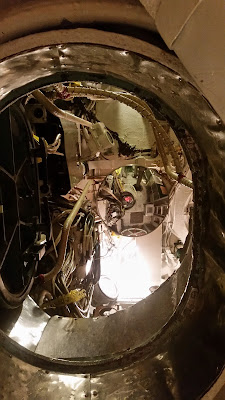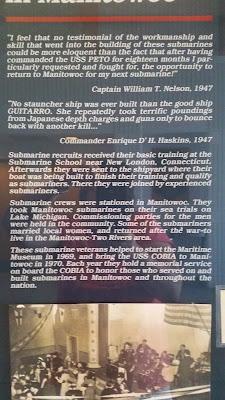 |
| USS Cobia is a Gato-class submarine that was made for the United States Navy and named for fish called cobia. She was launched in November of 1943. |
 |
| The museum offers tours of the Cobia. This ship is 311' 9" long, 37'3" wide and has a draft of 17'. |
 |
| From the bow torpedo room we passed officers quarters before coming to the command center. This is where the submarine was operated. |
 |
| The Electric Boat Company that built this sub in Connecticut rated the ship's hull as good to 300'. She could go further but by 600' she would have crumpled like a tin can. |
 |
| Looking up in to the sail. |
 |
| The communications center had its own room next to the command center. |
 |
| All of the museum wasn't Cobia related. It also included a huge section on NOAA, small ship models, some boats and a huge engine with attached propeller. |





























































No comments:
Post a Comment